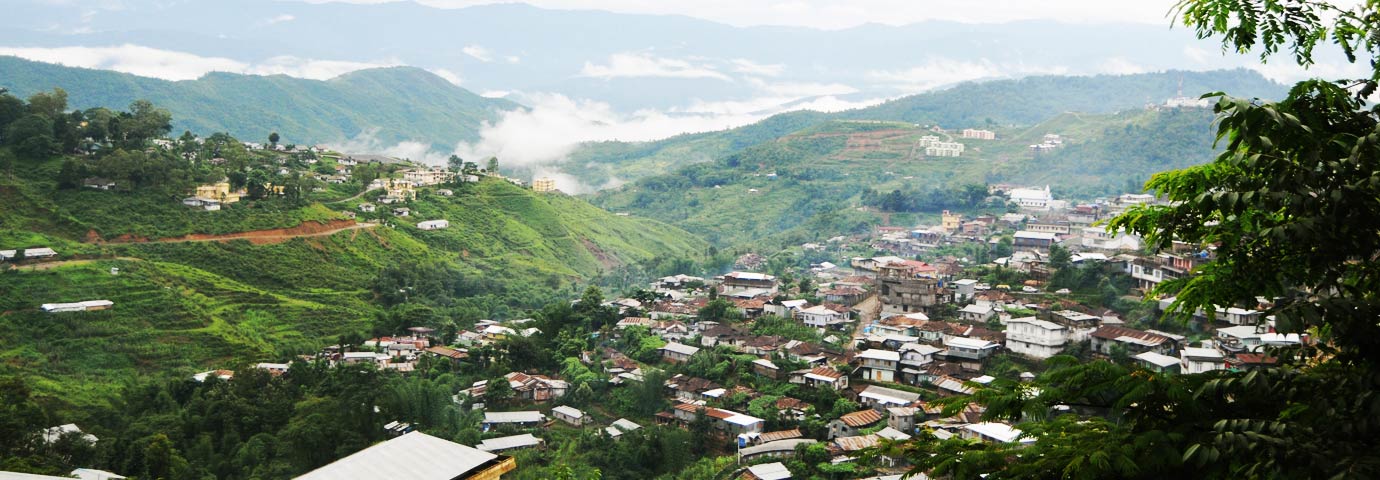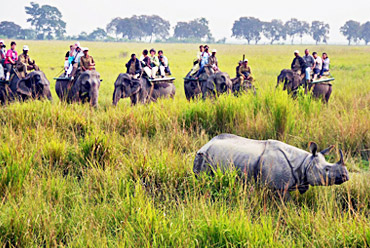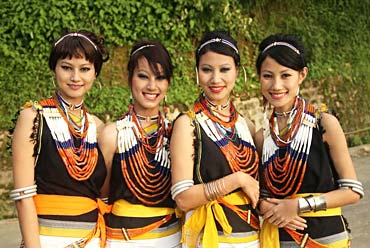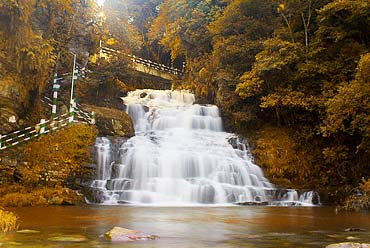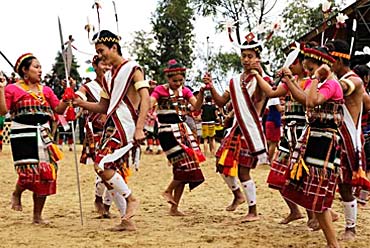Tourist Attractions in Kohima
The highway from Imphal to Dimapur-the route along which the Japanese hoped to reach the plains of India-crosses the saddle at the foot of the World War II Cemetery. These immaculate gardens stand as a memorial to the Allies who died on this very spot during the three-month Battle of Kohima that ended in April 1944. Each grave is supported by a bronze plaque with a suitable epitaph.
The Catholic Cathedral at Aradura Hill is an important landmark; it is one of the largest cathedrals in the entire northeast and is home to the biggest wooden cross in the country.
The Nagaland State Museum, about 1½ km north, is a one-stop treasure trove where one can get a glimpse into Naga culture through history. Here one can find dioramas of each tribe being displayed. The main items exhibited are gateposts, statues, pillars, jewelry, and a ceremonial drum that looks like a dug-out war canoe in a separate shed. This canoe suggests that the Nagas may have originated from Sumatra. The basement of the museum has birds and animals of northeastern hill states.
The Zoological Park abounds in rich flora and fauna of Nagaland. Of special interest is the world famous Blythe Tragopan. In the heart of the town, one can see the last relics of the Kachari kingdom.
Places Around Kohima
Just 5 km away, on the Dimapur-Kohima Road is Ruzaphema, a place ideally suited for leisure and recreation with its colorful bazaars and a wide range of tribal handicrafts that are exquisite in their style, and unique in their own way. Around 10 km from Kohima is the village of Khonoma that abounds in stories of valor and courage. The terraced fields, which produce 20 types of paddy at different elevations, present a beautiful view. The Khonoma gate relates the tragic story of British infiltration into Naga Hills in 1879.
Situated at an altitude of 3,048 meters above sea level, 15 km from Kohima is the Japfu Peak. It is the second highest peak of Kohima and ideally suited for trekking and scaling. The sight of Kohima from here is breathtakingly beautiful.
Dzukou valley is one of the best trekking spots in the northeast region at an altitude of 2,438 meters above sea level, behind Japfu Peak and 30 km to the south of Kohima. The entire valley is overshadowed with a type of tough bamboo brush that makes the place appear like a mowed lawn. White and yellow lilies and numerous other flowers adorn the valley in summers, while rhododendrons ornament the hills surrounding the valley.
Mokokchung and Zunheboto, situated 160 and 150 km respectively from Kohima are picturesque towns at great heights. Mokokchung is a cultural center of the Ao Nagas. Here the main festivals of the Aos-Moatsu and Tsungremmong-are celebrated during the first week of May and August respectively.
Situated at an altitude of 195 meters above sea level is Dimapur, an important commercial center of Nagaland. Dimapur hosts the only airport in Nagaland and is also well connected with the neighboring states of Manipur, Assam, Arunachal Pradesh, Meghalaya, Tripura and Mizoram by National Highway 39. It is also the main railhead in Nagaland.
Kohima has been profusely showered with Nature's bounty. Besides the varied flora, the fauna of Kohima too boasts of its exotica. The Fakim Sanctuary, close to the Myanmar border, receives high rainfall and is inhabited by tigers and hoolock gibbons. The Pulie Badze Sanctuary is a ringed-in 9-sq-km area that lies in the proximity of Kohima. Located at a distance of 37 km from Dimapur, the Intanki Wildlife Sanctuary has some rare species of birds.

